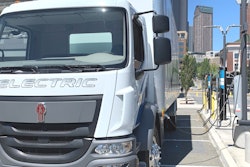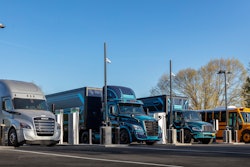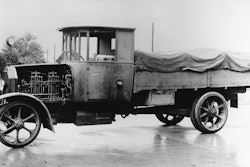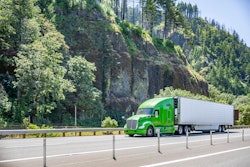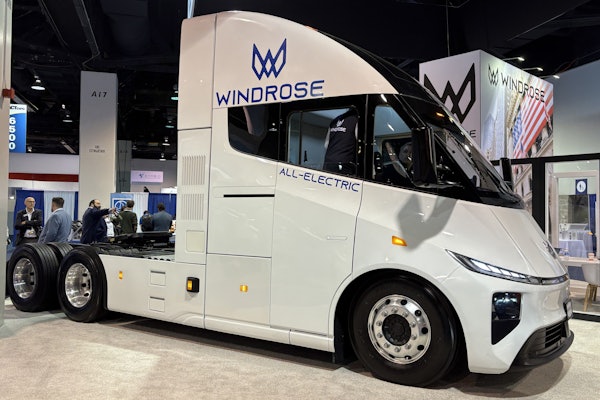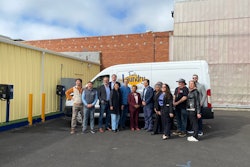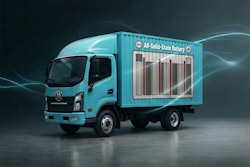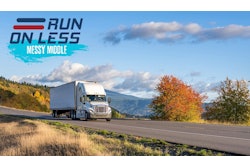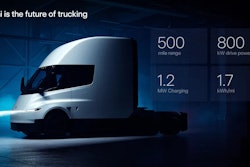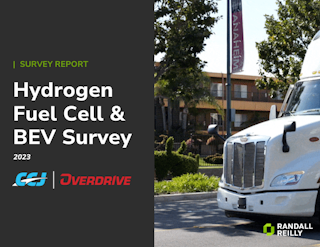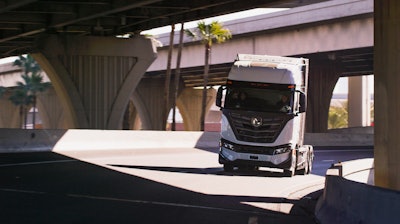
As trucking moves farther into its “Messy Middle” period — coined by the North American Council for Freight Efficiency (NACFE) in 2019 — it remains to be seen which alternative powertrains and fueling options will catch on as dominant market forces in the decades ahead.
Electric trucks are earning headlines, but a zero-emission future is unlikely to be solely electric.
Natural gas
Natural gas has long stood as a lower-emission and lower-cost alternative to diesel, but has struggled to gain market share beyond fringe applications. Despite lower prices at the pump, liquefied (LNG) and compressed natural gas (CNG) aren’t as readily available as diesel, and the purchase prices of NG-powered engines have hindered adoption by regional and national on-highway carriers.
Today, natural gas is mostly found in municipal, transit and severe-duty applications where vehicle owners have access to centralized fueling stations and specialized technicians who can support the different engine platforms.
[RELATED: Freightliner to offer Cummins NG engine for Cascadia]
Yet natural gas could still prove useful in the declining emissions future. Cummins has introduced a fuel agnostic engine line that was designed intentionally to reduce engine complexity and make it easier for carriers to support a multifuel fleet.
“We think natural gas is an awesome solution right now because it’s very diesel-like,” says Brad Sutton, Cummins executive director of powertrain engineering. “It’s still a fuel. Still an engine. It gives fleets something they are used to and they can adopt quickly while also moving them forward on their journey.”
Renewable diesel
Another existing solution that could gain market adoption are renewable fuels, particularly renewable diesel. Different than biodiesels, which must be blended with petroleum diesels to be used, renewable diesel can serve as direct replacement for the fuel in today’s heavy trucks.
[RELATED: TPS readers predict ‘alternative’ market share]
Formulated with vegetable oils and fats and shown to produce lower emissions than fossil fuels, renewable diesels could enable trucking to further reduce its influence on air quality without requiring the industry to abandon its diesel roots.
Volvo, which in July announced a partnership with Westport to bring the latter’s High Pressure Direct Injection (HDPI) fuel system to market, believes renewables have a place in trucking’s zero-emission journey.
“Decarbonization with internal combustion engines running on renewable fuels, especially with HPDI, plays an important part in sustainable solutions,” said Volvo Chief Technology Officer Lars Stenqvist at the time. “HPDI has been on the road in Volvo trucks for over five years and is a proven technology that allows customers to significantly reduce CO2 emissions in LBG (liquefied biogas) applications here and now and is a potential avenue for hydrogen.”
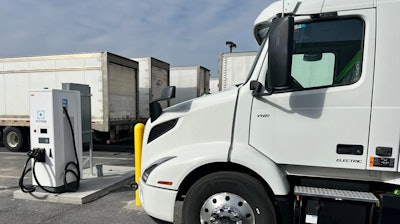 OEMs are announcing partnerships with each other and third-party charging developers to strengthen the North American commercial vehicle charger network.Volvo Trucks North America
OEMs are announcing partnerships with each other and third-party charging developers to strengthen the North American commercial vehicle charger network.Volvo Trucks North America
Electric
S&P Global Mobility estimated in June there are 98 companies in the funding, designing or production stage of launching an electric commercial vehicle. Associate Director James Martin said many of those companies may never bring a product to market but the sheer number trying indicates the sector’s growth potential. EVs sit on the forefront of the industry’s alternative power revolution.
They also have several distinct advantages and limitations, which makes their future hard to predict.
On one side, EVs have no tailpipes and provide trucking the most direct path to meeting zero-emission deadlines. They also reduce maintenance expenses and propulsion costs (electricity is cheaper than fuel) and, when coupled with purchase incentives, may offer a lower total cost of ownership in several applications.
[RELATED: TPS readers predict the biggest barrier to acceptance of alternative solutions]
Yet without those incentives EVs are prohibitively costly. Charging is an even larger barrier. Many states have a limited number of public heavy truck charging stations and installing on-site charging (for fleets and dealers) can be exhausting.
“I’m not concerned about getting chargers, or getting trucks,” said John Waterman, energy services manager at ETHERO Truck + Energy, a Nikola dealer in the Mid-Atlantic states and northern California. “I have concerns about accessing power from a utility. It can take 12 to 24 months to get access to power to build a stationary charging solution.”
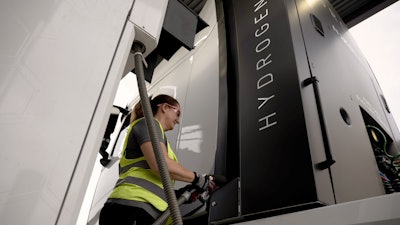 Nikola Corporation is investing in its own hydrogen fueling network to support the trucks it will bring to market.Nikola Corporation
Nikola Corporation is investing in its own hydrogen fueling network to support the trucks it will bring to market.Nikola Corporation
Hydrogen
Perhaps the most theoretical of trucking’s alternative powertrain options is hydrogen. Whereas electric vehicles provide a clear path to zero emissions but face major infrastructure challenges, and natural gas and renewable diesels offer emission reductions but do not reach zero, a path to hydrogen fuel cell adoption is murky for many in trucking.
Sutton believes fleets in the hydrogen fuel space will likely adopt it first, and their successes with the equipment and speed developing a national fueling network will determine hydrogen’s long-term viability. Fueling a truck with hydrogen, natural gas or diesel remains a much faster process than charging and hydrogen fuel cell vehicles are emission free.
But hydrogen also remains the furthest solution from mass accessibility. Though Nikola has hydrogen fuel cell trucks in use and Paccar’s truck brands announced in May they will begin production soon, many OEMs have yet to release hydrogen models. There are far fewer hydrogen fueling locations nationwide than EV charging stations and less government funding available to install them.
Sutton said Cummins believes hydrogen “is a great heavy-duty truck option,” but also believes the heavy-duty industry will need to push for the fuel if it desires mass acceptance. “We will have to drive for the infrastructure and adoption.”
Keep up with our special report on trucking's transition to cleaner trucks:
Part I: This isn't trucking's first fueling and propulsion revolution
Part II: Why are we doing this?
Part IV: What will drive — or inhibit — alternative power adoption?
Part V: Performing an alternative power market analysis
Part VI: What it takes to install charging infrastructure
Part VII: Training on alternative powertrains vital to employee safety, business success
Part VIII: The challenges of building your best EV service bay
Part IX: Making the case: How to effectively sell alternative power
Part X: Safety in the Service Bay
Part XI: How electric trucks may transform dealer revenue streams

